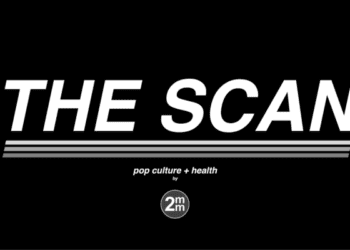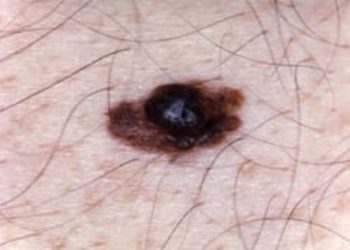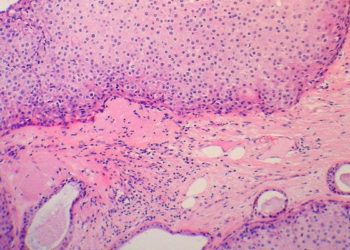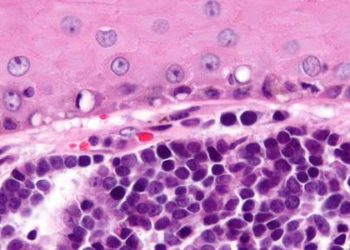Topical fluorouracil cream reduces the long-term burden of actinic keratoses
1. Treatment with a single treatment of topical fluorouracil cream reduced the long-term number of actinic keratoses (AKs) compared to those who had received cream alone.
Evidence Rating Level: 1 (Excellent)
Study Rundown: AKs are highly prevalent among elderly patients and are associated with a significant cost and morbidity due to their malignant potential. To lessen the possibility of a cancerous transformation, spot treatment (e.g. liquid nitrogen) and field treatment (e.g. fluorouracil (FU)) may be used. However, studies have not followed participants longer than 6 months to observe the effect of topical fluorouracil cream on AK prognosis. These authors evaluated the long-term efficacy (>2 years) of AK treatment using a single course of FU cream, 5%. This study demonstrated that a single course of FU effectively reduced the number of AKs and consequently the need for spot treatment for longer than 2 years. A strength of this study was its large patient population and multiple site locations, suggesting a high generalizability. Conversely, a limitation was that the study clinically diagnosed AKs as opposed to histologically diagnosing them.
Click to read the study in JAMA Dermatology
Relevant Reading: Actinic keratoses: Natural history and risk of malignant transformation in the Veterans Affairs Topical Tretinoin Chemoprevention Trial
In-Depth [randomized controlled trial]: Nine hundred and thirty-two veterans were prospectively enrolled in this trial. Participants were randomized to either a topical FU cream, 5% or a control vehicle-only cream. After randomization, characteristics including age, sex, race, ethnicity and highest level of education were similar between the two groups. Importantly, the number of AKs before treatment were similar after randomization (11.1 vs. 10.6, P>.1). However, after treatment, the FU group had fewer AKs compared to the control group at 6 months (3.0 vs. 8.1, P<0.001) as well as for the overall study duration (p <0.001, mean duration of follow-up = 2.6 years). Additionally, the FU group showed a higher rate of complete AK clearance at 6 mo (38% vs. 17%, p<0.01). Though participants in both groups required spot treatment, the FU group took longer to require the first AK treatment (6.2 months vs. 6.0 months; hazard ratio, 0.69; 95% CI 0.60 – 0.79).
Image: PD
©2015 2 Minute Medicine, Inc. All rights reserved. No works may be reproduced without expressed written consent from 2 Minute Medicine, Inc. Inquire about licensing here. No article should be construed as medical advice and is not intended as such by the authors or by 2 Minute Medicine, Inc.







